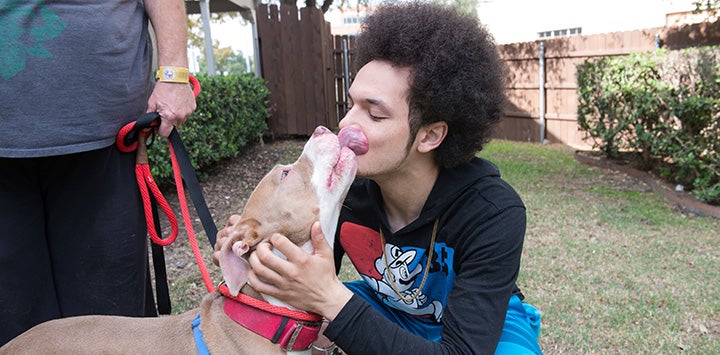
Field Return to Home (Owner) Training Playbook
Introduction
Almost since its inception, field operations has operated under the premise that stray animals should be impounded and brought to the shelter in hopes that the animals will be reclaimed, and the owners should be punished with fines for violating the local laws. In recent years, however, there has been a shift to field officers playing a role in the overall lifesaving mission and community engagement by working to reduce intake through various programs, including returning animals to their owners while still out in the field, rather than bringing them into the shelter system.
This playbook is designed to provide an overview of Field Return to Home (Owner) (F-RTH/F-RTO) programs and help you implement an aggressive F-RTH program at your animal control agency. The primary goal of this type of program is to reunite lost animals with their owners while the officer is still on duty rather than taking the animals into the shelter.
Program Overview
F-RTH programs play a vital role in:
- Reducing the number of animals in the shelter
- Decreasing the likelihood of disease outbreaks
- Promoting the image of the field officer within the community as someone who cares about the well-being of the animals, rather than someone who fits the old stereotype of the local “dogcatcher”.
Program Composition
The key to successfully implementing this program is the field officer’s commitment to returning animals without having to impound them to the shelter. Once a stray is safely captured, officers must check for identification, including scanning the animal for a microchip. If none is found, officers can then begin canvassing the area to attempt to identify the owner. Starting with the person who called in the initial report, officers should be asking residents if they know who owns the animal. Postal carriers are especially attuned to dogs in their assigned areas and should be considered a valuable resource to animal control. Many owners of lost pets post lost reports on local social media sites and call in reports to the animal control agency. Officers should check these sites and their own shelter to see if a report has been filed. Some agencies have equipped their officers with fillable “dry-erase” found signs or printers in their trucks to be able to create and post signs on scene.
The following resources are recommended when setting up and implementing a successful F-RTH program at your organization:
- Universal microchip scanners in every vehicle
- Contact information for microchip registries
- Ample supply of collars, leashes and cat carriers, to give to owners when necessary
- Handouts containing information on topics such as leash-walking your dog, spay/neuter services or other veterinary assistance programs in your area, pet food pantries and local laws
- A toolkit containing equipment necessary to fix common problems such as broken fences and runner cables (depending on ordinances)
- Additional runner cables (depending on ordinances)
- Fillable “Found dog” signs to be posted on scene
Sample Procedure and Program Information Documents
Now that you have a general understanding of F-RTH programs, the following documents may act as templates as you implement or scale up this program at your organization. Keep in mind that there is no exact or perfect form of implementation. Using the considerations and program composition notes above, you should use the following only as guidelines or building blocks when creating your own standard operating procedures or documents (both internal and public).
If you need further assistance or clarification, please reach out to your regional strategist, regional director or the Best Friends national shelter support team at team2025@bestfriends.org.
- Humane Animal Control manual, chapter on Intake Diversion in the Field
- Humane Animal Control manual, chapter on RTH
- Sample SOP and guidelines on creating an SOP
- “Beyond the Scanner: Advanced Return to Home (Owner) in the Field Techniques” (video)
Updated August 2024
If you found this playbook helpful, check out our full catalog of handbooks, manuals, and playbooks.